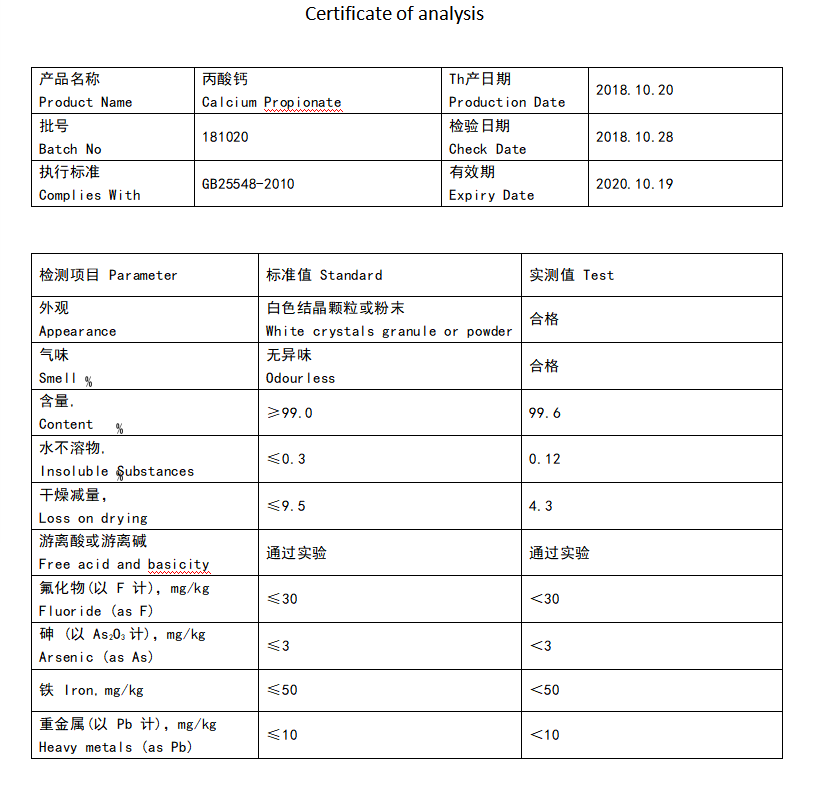-
Call us toll free : 0086-13866721542
-
Email : dep5@techemi.com
Call us toll free : 0086-13866721542
Email : dep5@techemi.com
Name: Calcium Proposition Powder
CAS number: 4075-81-4
Molecular formula: C3H8CaO2
Molecular weight: 116.17
EINECS number: 223-795-8
Mol file: 4075-81-4.mol
Product origin:
ChinaLead Time:
7-15daysDescription
Calcium propionate is a relatively new food mold inhibitor, a calcium salt of acidic mold inhibitor propionate. It appears as a white crystal or powder, has no odor or a slight odor of propionic acid, is stable to light and heat, has hygroscopicity, and is easily soluble in water. The aqueous solution is weakly alkaline, slightly soluble in methanol and ethanol, and insoluble in benzene and acetone. It is prone to deliquescence in humid air and loses crystalline water when heated to 120 ℃. It undergoes phase transformation at 200-210 ℃ and decomposes into calcium carbonate at 330-340 ℃. Under acidic conditions, free propionic acid is produced, which is weaker than sorbic acid and stronger than acetic acid, and has antibacterial effects. It has inhibitory effects on Aspergillus niger and Aerophilic Bacillus, but has no effect on yeast. Calcium propionate is a normal intermediate product of animal metabolism and is relatively safe to consume by animals. It has a wide range of antibacterial effects on molds, yeast, and bacteria, inhibits microbial growth, prevents feed mold, and can be used as a mold inhibitor for food and feed, as well as a preservative for bread and pastries. As a feed additive, it can effectively inhibit feed mold and extend the shelf life of the feed. If combined with other inorganic salts, it can also increase the appetite of livestock and increase milk production of cows. Its addition amount is less than 0.3% of the formula feed (calculated by propionic acid). When used as a food additive according to China's regulations, it shall be implemented in accordance with GB2760-86. Its scope of use is only for bread, vinegar, soy sauce, and soy products, with a maximum usage of 2.5g/kg.
Application
Calcium propionate is also an acidic food preservative, and its antibacterial effect is influenced by the environmental pH value. The minimum inhibitory concentration is 0.01% at a Ph value of 5.0 and 0.5% at a Ph value of 6.5. It has a strong inhibitory effect on various molds, Gram negative bacteria, or aerobic Bacillus in acidic media. It has a special effect on preventing the production of aflatoxin, but is almost ineffective on yeast. In the food industry, it is mainly used for vinegar, soy sauce, bread, pastries, and soy products, with a maximum usage of 2.5g/kg (calculated by propionic acid, the same below); The maximum dosage used in wet dough products is 0.25g/kg. It can also be used as a mold inhibitor for feed.
Specification

Tags :